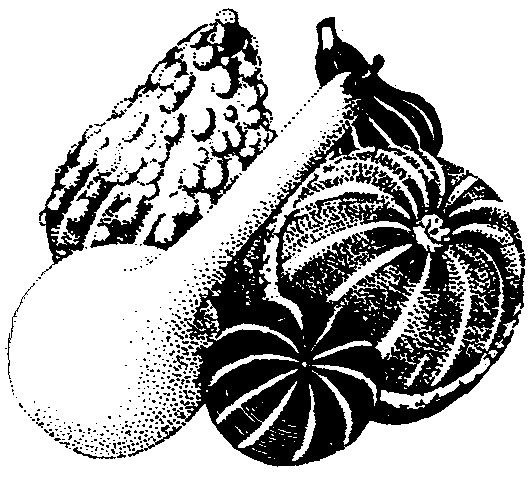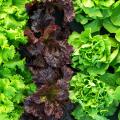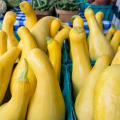Gourds
Gourds

Gourds are divided into several groups based on use and flower color. The small, hard-shelled ornamental gourds used for decoration have yellow flowers. Varieties within this group are Apple, Bell, Egg, and Crown of Thorns. Ornamental gourds belong to the same botanical group as summer squash, and they do crosspollinate.
The ultility gourds, dipper and birdhouse, have white flowers. The dishrag gourd (luffa) is a utility gourd with yellow flowers. This gourd can be eaten when young and is also known as running okra. The fruit can reach 2 feet in length and have prominent ribs, or it can be smooth.
Gourds are grown the same way as muskmelons, cucumbers, squash, and pumpkins. Vines are vigorous and spreading and will readily climb a support or trellis. Trellising results in better shaped gourds and keeps them off the ground, reducing rotting and soil staining.
Plant seeds about 1 inch deep when soil is warm and danger of frost is over. Space plants about 2 feet apart when not trellising. Utility and luffa gourds have large, vigorous vines and require a long growing season. Although mature gourds are not hurt by frost, vines of all types are sensitive to frost.
Fertilize as for squash and watermelons. Side-dress when the vines begin to run.
Harvest ornamental gourds in August or September when fruits become hard. Harvest dipper gourds when they turn tan or brown and luffa gourds when skin is yellow and can be easily removed. Harvest using clippers to avoid twisting or breaking the stems. Handle carefully to avoid cuts and bruises.
Following harvest, wash the ornamental, dipper, and birdhouse gourds in a non-bleaching disinfectant and place them in a dry location with good air circulation until thoroughly dry. Cure dipper and birdhouse gourds for several weeks in a warm, dry place. Gourds are very hard, and the seeds rattle when completely dry.
With luffa gourds, remove the yellow skin and seeds from the fresh gourds. Remaining fibers can be washed and dried in the sun. Luffa gourds dried with the skin on must be soaked in water for several days to soften the skin to ease its removal. Remove seeds, wash fiber mass, and dry in the sun.
After drying, colorful ornamental gourds can be waxed or dipped in shellac and hung by their stems to dry.
Major insect pests of gourds are cucumber beetles, squash bugs, squash vine borers, and pickleworms.
Publications
News
If you grow your own vegetables, you will likely see at least a few pesky insects that want to feed on your plants. Slugs are one of the pests you may be noticing now.
Did you know yellow squash is in the pumpkin family and are 95 percent water?
Tomatoes are a popular crop, both for commercial growers and home gardeners. Even the best tomato growers run into problems along the way! We put together a simple, easy-to-follow guide to help you spot a few of the most common tomato troubles gardeners see.




